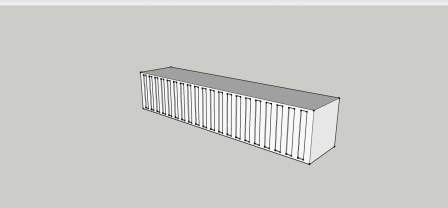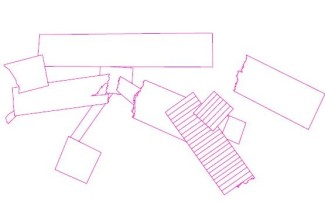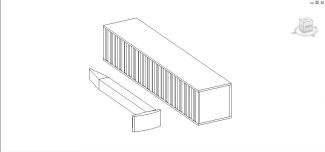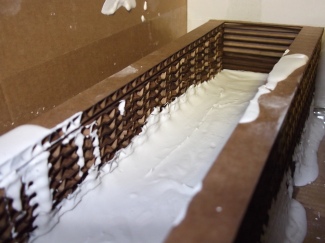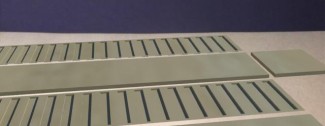Sophomore year. Design Technology. Shipping Containers. For a whole semester.
I thought my teacher was crazy. Shipping containers are so boring and we see them every day on the trains that are constantly running through Fargo, ND. Why on earth would we spend a whole semester working with shipping containers in an Architectural Design Technology course? Little did I know, within a year I would be slightly obsessed with them. And other designers around the world also seem to see the potential in a simple 40 x 8 x 8.5 shipping container.

A singular container has 8,000 lbs of steel which takes 8,000 kWh of energy to melt back into liquid steel. Instead of melting down older containers, it has become a popular solution to use them as main framing in modular home design. Some architects choose to hide the steel and create a more traditional building. Other designers choose to emphasize the steel into a more modern building.

Believe it or not… but both of these homes are made with shipping containers.

There are so many vacant shipping containers lying around, that is one of the reasons why shipping container buildings are a great idea. The containers are structurally stable and can be in most environments without trouble. One problem if that before a container can be inhabitable, it needs to be free of toxic chemicals. There are many different chemicals that are used on the steel containers that are used to protect it during the overseas journey.
Like many construction materials, there are positives and negatives. The containers are readily available, structurally stable, at a reasonable price, easy to transport and construct, and easy to reuse. Some negatives are alterations to the steel because welding openings in containers requires high energy, containers need to be cleaned of toxic chemicals and restrictions of the dimensions and limited space to design with.
All of the pros and cons considered, I still think using the shipping containers is a great idea. I am inspired by all of the different ways shipping containers are being used. I would love to follow suit and either design a while building of shipping containers or at least integrate one into a building.

100 Shipping Containers Become Student Housing in France
5 Cool Buildings Made of Shipping Containers
10 Clever Architectural Creations Using Cargo Containers
I suppose reading this you are expecting me to show you all of the designs for buildings that I dreamed up during my Design Technology course. But that is just the contrary.
We were told to build 5 identical shipping container models at ¼ in = 1 ft scale.
For the first assignment we were instructed to smash or break on of these five models and to use AutoCAD to trace the smashed pieces in elevation and plan.
Second, was to write a narrative of the imagined travel and use Photoshop to show this imagined travel.
The third was to find an object and model both the object and the shipping container model in Revit.
Assignment four it was required to use plaster to pour a mold into the shipping container models. And also to laser cut a void of the shipping container model and pour plaster into the void as well.
Fifth, we were to create a light using either the shipping container models or create a new model using the container as inspiration.
Lastly, was to deconstruct the final shipping container and document the steps of deconstruction.
.

